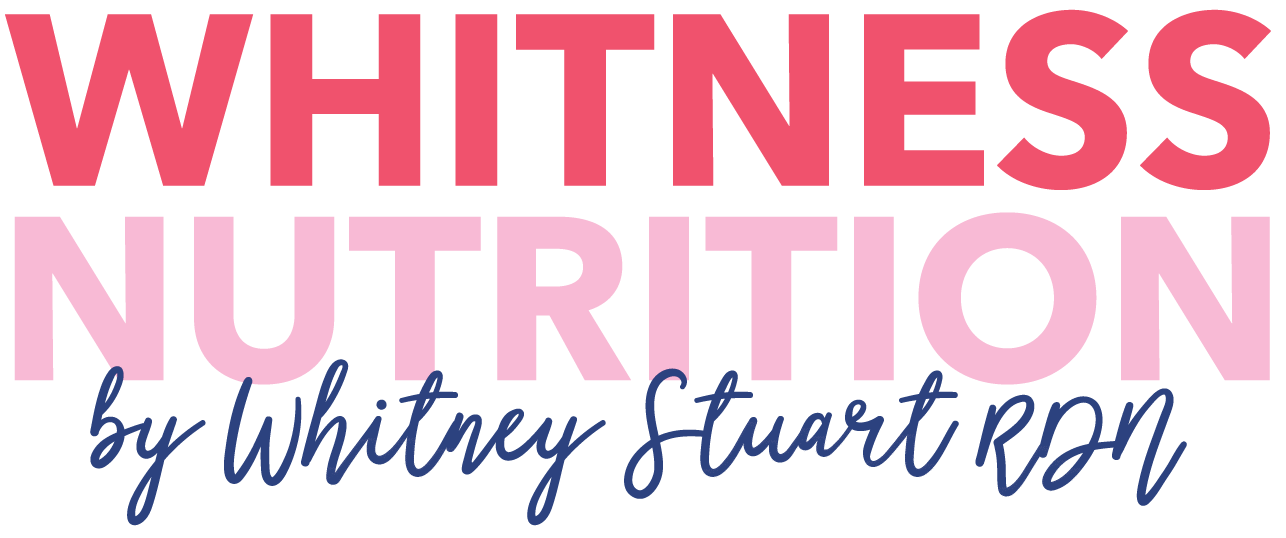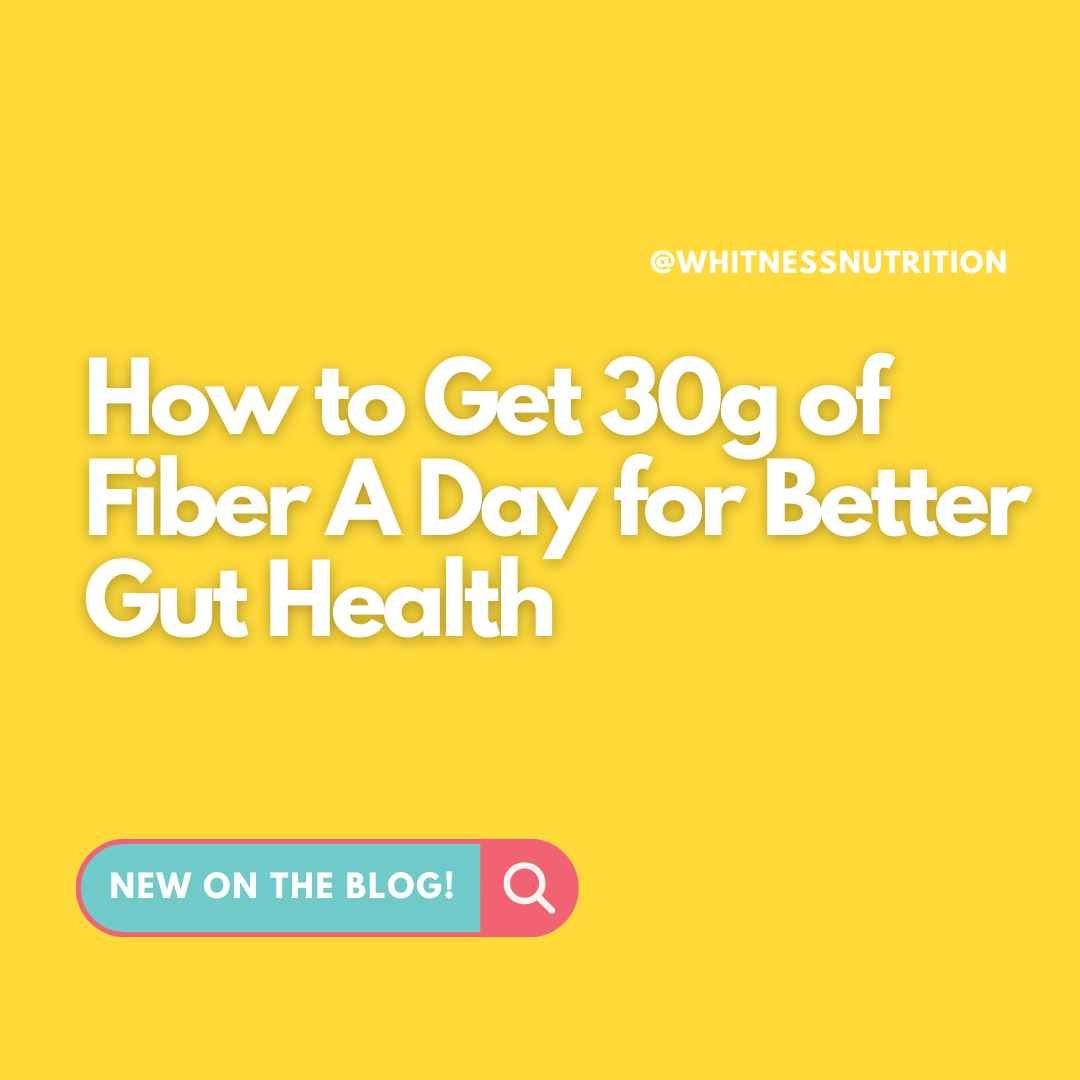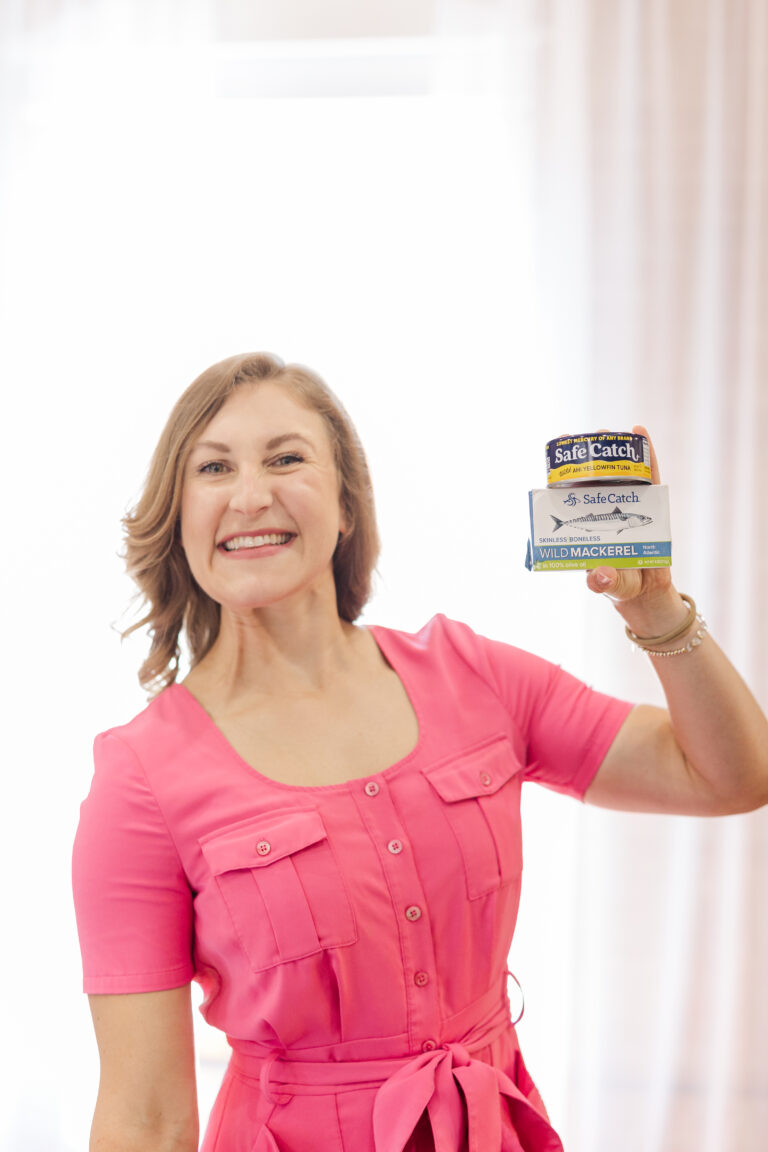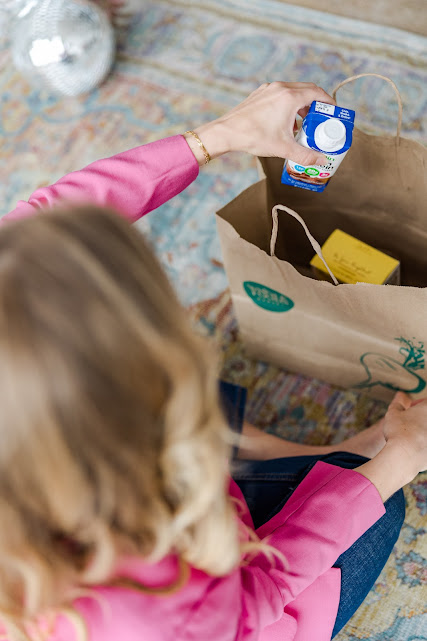How to Get 30g of Fiber A Day for Better Gut Health
Dietary fiber is critical for digestion, blood sugar balance, satiety, and long-term disease prevention—yet today’s ultra-processed food culture makes it hard to get enough. We grab what’s fast; fiber doesn’t always cut.
Not getting enough fiber? You’re not alone. It can lead to poor gut health, irregularity, blood sugar spikes, and increased risk for type 2 diabetes and heart disease. The good news? You don’t need a restrictive diet or a cabinet full of supplements. With a few intentional choices, you can increase your fiber intake to 30g daily, consistently and enjoyably.
In this post, I’ll explain how to get 30g of fiber daily using easy, real-food strategies that fit your routine. Let’s do this.
How to Get 30g of Fiber A Day
You’re not alone if you’re reading food labels and still wondering how to hit 30 grams of fiber daily. Most people get half that amount, yet fiber is foundational to heart disease prevention, blood sugar control, and gut health.
This post is here to help you connect the dots. We’ll discuss whether 30g of fiber is the right goal for you, how it helps support digestion and metabolic balance, and real-food ways to get there using vegetables, legumes, fruits, plant foods, and more.
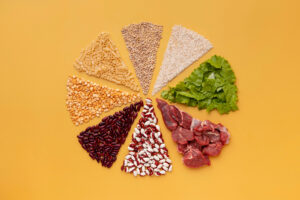
Fiber isn’t just about roughage or preventing constipation. It helps absorb water, slow digestion, and feed the good bacteria in your gut. That’s why types of fiber matter—both soluble and insoluble. Together, they regulate blood sugar, lower cholesterol, and keep you full.
Whether you’re dealing with type 2 diabetes, irregular digestion, or just want to feel better daily, this guide will empower you to confidently increase your fiber intake.
Is 30g of Fiber Enough For Each Day?
Short answer: Yes—30 grams of fiber per day is not just enough for most adults, it’s ideal. According to the USDA and most health experts, adult women should aim for 25g/day and adult men around 38g/day. That makes 30g a balanced, universal target that works well for nearly everyone.
Fiber is key in regulating digestion, controlling appetite, and supporting heart health. A diet rich in fiber from plant foods has been linked to a lower risk of heart disease, type 2 diabetes, and even certain cancers. It also helps to prevent constipation, balance hormones, and improve gut microbiome diversity.
But here’s the kicker: not all fiber is created equal. There are two main types of fiber—soluble, which dissolves in water and helps absorb water, and insoluble, which adds bulk to stool and keeps things moving. Foods like chia seed, oats, beans, and apples contain both.
Experts recommend getting your fiber from various vegetables, legumes, beans, peas, and lentils, whole grains like brown rice, fruits, and dried fruit. Always check the nutrition label for fiber content, especially in packaged foods.
Use fresh fruit options, nuts, and seeds!
- Raspberries: ~8g per cup
- Pears (with skin): ~5.5g per medium
- Apples (with skin): ~4.5g per medium
- Chia seeds: ~10g per 2 tablespoons
- Flaxseeds (ground): ~6g per 2 tablespoons
- Almonds: ~3.5g per ounce (about 23 nuts)
- Pistachios: ~3g per ounce
- Sunflower seeds: ~3g per ounce
And don’t forget—when increasing fiber, you need to drink plenty of water to help it do its job effectively. Hydration is key to comfortable digestion and reaping all the benefits of your upgraded fiber intake.
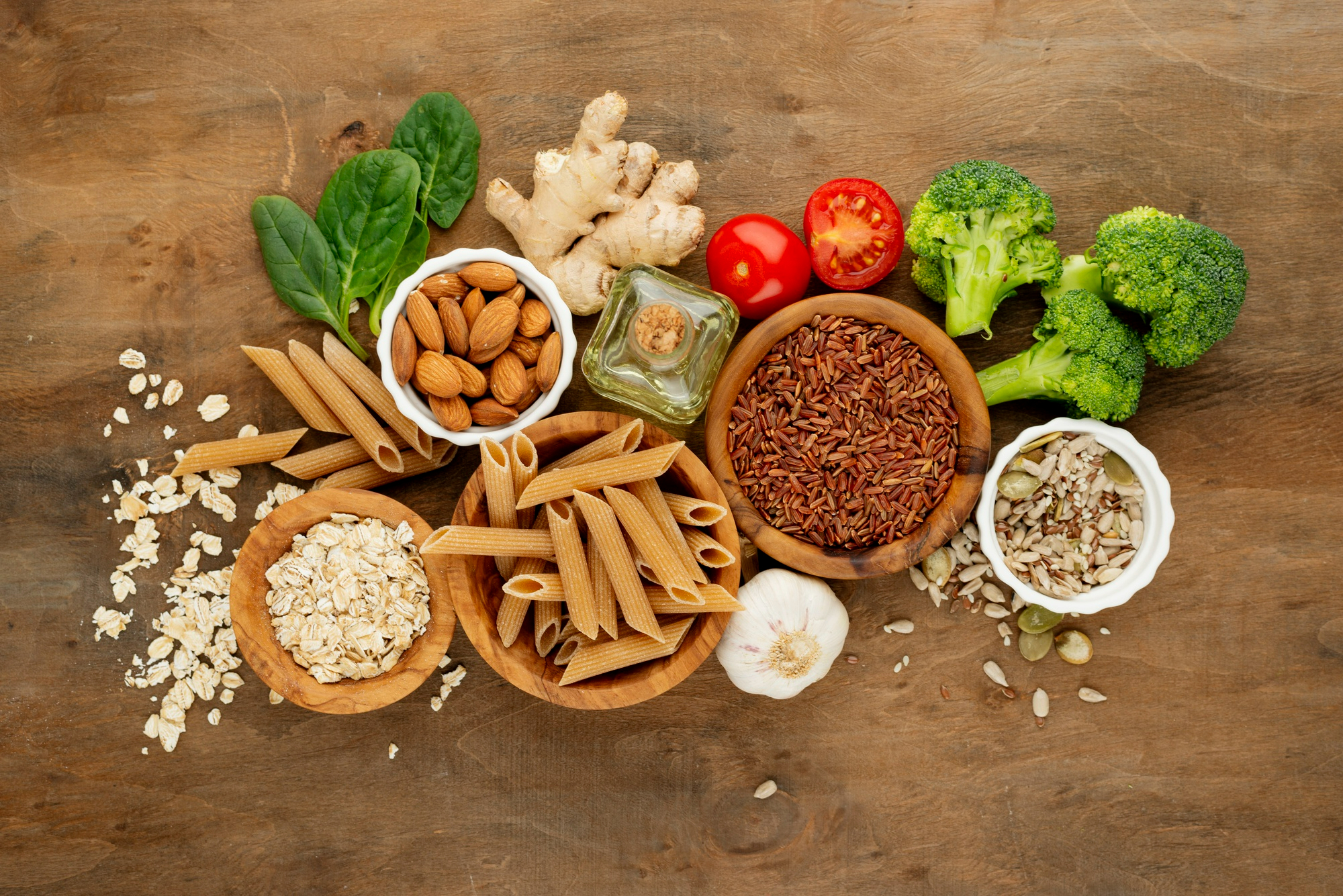
What Does 30g of Fiber Look Like (For Diabetics)
You might be wondering what a full day of 30 grams of fiber actually looks like, without sacrificing blood sugar balance or flavor. Here’s a real-life sample day using fiber-rich plant foods, smart proteins, and healthy fats to create balanced, blood-sugar-friendly meals that support type 2 diabetes and overall health.
Breakfast
- ½ cup oats (4g fiber)
- 1 tbsp chia seed (5g fiber) – chia seeds benefits for diabetes include improved insulin sensitivity
- ½ banana (1.5g fiber)
- 1 tbsp almond butter (1.5g fiber)
- 2 boiled eggs (0g fiber, protein + fat) = ~12g fiber
Lunch
- 1 medium baked potato with skin (4g fiber)
- ½ cup black beans (7g fiber)
- ¾ cup mixed greens + bell peppers + olive oil vinaigrette (3g fiber)
- 3 oz grilled shrimp or chicken breast (0g fiber, lean protein) = ~14g fiber
Snack
- ¼ cup dried fruit (2g fiber)
- 10 baby carrots (2g fiber)
- 1 tbsp cashew or peanut butter (1g fiber + fat/protein) = ~5g fiber
Dinner
- ½ cup brown rice (2g fiber)
- ½ cup beans peas and lentils (6g fiber)
- ¾ cup roasted vegetables legumes like broccoli, cauliflower, or Brussels sprouts (3g fiber)
- 1–2 turkey jerky sticks or grilled tofu (0g fiber, protein) = ~11g fiber
Daily Total = 30–32g of fiber!
Every meal includes a veggie, protein, healthy fat, and carb to keep you energized and your blood sugar steady. Balanced, doable, and delicious.

This balanced day includes a mix of fiber, fiber-rich plant foods, and meals supporting blood sugar balance. Remember to check the nutrition label when choosing packaged items and drink plenty of water throughout the day to keep things moving smoothly.
If you’re new to high-fiber eating, increase your intake gradually to give your body time to adjust—and enjoy the benefits of better digestion, energy, and metabolic support!
How to Eat 30g of Fiber A Day (For Diabetics)
If you aim to increase your fiber intake to 30g a day, here’s how to do it safely and sustainably, especially for those managing type 2 diabetes.
- Start with Breakfast
Make breakfast work harder for you. Mix ½ cup oats (4g) with 1 tbsp chia seed (5g) and top with berries or dried fruit. Bonus: Add flax or a spoonful of nut butter. A high-fiber breakfast keeps blood sugar stable and supports digestion.
- Prioritize Whole Plant Foods
Fruits vegetables, beans peas and lentils, and whole grains like brown rice are key. Aim to include at least one source of fibre at every meal. The more colorful your plate, the better your fiber diversity.
- Choose the Healthiest Food from Trader Joe’s
Yes, even Trader Joe’s can be your fiber friend. Look for items like frozen lentils, high-fiber tortillas, and their chia or flax-enhanced yogurts. These are easy wins that taste great.
- Check the Nutrition Label
Don’t guess—check the nutrition! Aim for snacks and packaged meals with at least 4g of fiber per serving. Watch for hidden sugars that cancel out those benefits.
- Stay Hydrated
Fiber only works if you drink plenty of water. It needs fluid to absorb water and move comfortably through your gut. Without hydration, more fiber can lead to discomfort, not relief.
- For Diabetics: Increase Fiber Gradually
If you have type 2 diabetes, 30 grams of fiber is safe, but go slow. Start by adding one high-fiber food per meal and monitor how your blood sugar responds. Soluble fiber (from beans, oats, and chia seeds) slows glucose absorption and is especially helpful.
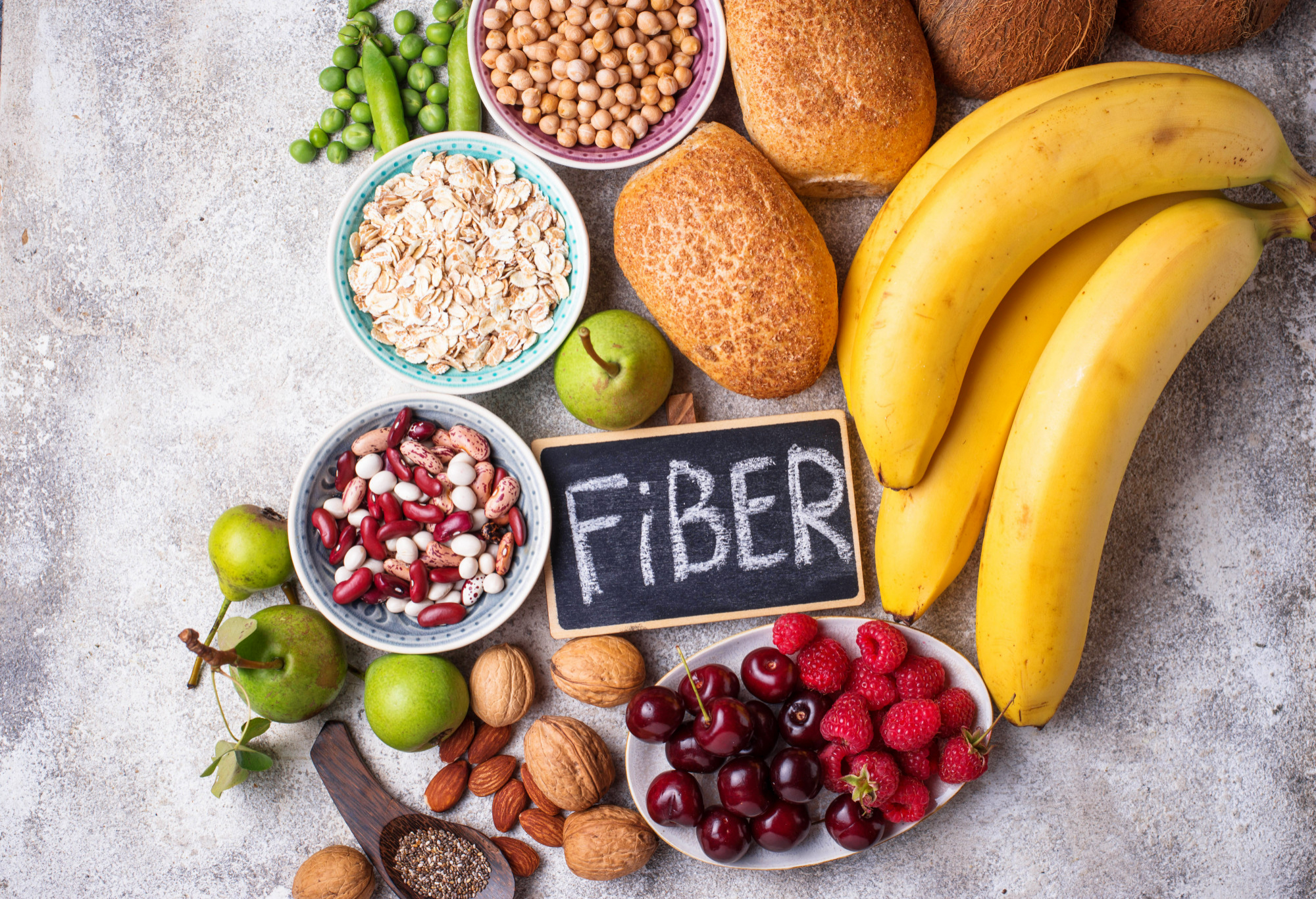
Final Thoughts
Reaching 30 grams of fiber a day isn’t about being perfect—it’s about being intentional. When you fill your plate with fiber-rich plant foods like beans peas, and lentils, fruits, vegetables, and smart picks like the healthiest food from Trader Joe’s, you’re doing more than just boosting digestion—you’re building a foundation for long-term health. Fiber helps absorb water, balance blood sugar, and prevent constipation. For those managing type 2 diabetes, high-fiber choices like chia seed aren’t just safe—they’re essential. (Chia seeds benefits for diabetes include slowing glucose absorption and reducing insulin resistance.) Just remember to drink plenty of water, check the nutrition label, and take it one meal at a time. Your gut, energy, and hormones will thank you.
Ready to Make High-Fiber, Blood-Sugar-Friendly Eating Effortless?
If this guide helped you rethink fiber, imagine what personalized support could do. Book a Free Discovery Call with Whitney Stuart. In just 15 minutes, we’ll discuss your health goals and challenges, and find the best-fit plan to help you increase your fiber intake, support type 2 diabetes, and finally feel good in your gut.
🥦 Real food. Real results. No guesswork.
Book your Discovery Call here and take the first step toward energized digestion and blood sugar bliss.
